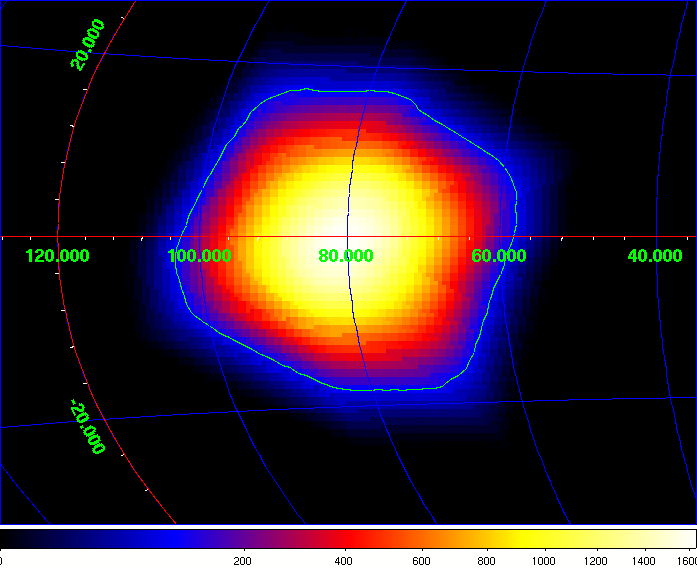Proposal Details - 0720026
Nucleosynthesis and positron annihilation in the Cygnus region (Martin)
Proposal Abstract
We propose that the Cygnus region be considered as a key target of INTEGRAL in order to answer fundamental questions related to the nucleosynthesis of massive stars and the production and transport of galactic positrons. Our proposal follows the 2x2Ms that have been granted in the AO5 and AO6 cycle. We ask for 2Ms to be performed in AO7 and request a long-term observational effort to allow significant progresses on nucleosynthesis and annihilation. The Cygnus region is the most nearby massive star forming region in our Galaxy, with about 200 O stars located at about 1.5kpc. This richness and proximity make it possible to get an accurate picture of the region and allow in the same time a clear detection of the 1809keV line of the 26Al synthesised by massive stars. The first years of INTEGRAL have allowed to attribute the most of this emission to the Cyg OB2 young cluster, thereby confirming the contribution of stellar winds to the ejection of 26Al and validating the recent improvements of stellar models. With additional observing time, we will be able to evaluate more accurately the morphology of the 1809keV emission and to relate it to specific stellar groups. Current theoretical estimates also show that we may be close to detect the 1173/1332keV emission from the decay of the 60Fe released by supernova explosions. These advances will be strong constraints on the stellar models. A substantial increase of the exposure on Cygnus will also lead to the detection of the 511keV annihilation signal and/or constrain the diffusion regime of the galactic positrons as well as the existence of disk positron sources other than 26Al. Both aspects are essential to the understanding of the 511keV galactic emission observed to come mostly from the galactic bulge. All these science prospects fully justify the substantial INTEGRAL observing time we require. In addition, the Cygnus region is rich in compact objects, thus ensuring the interest of the field for the community at large.
Observation Strategy (Recommended by TAC)
Total of 2 Ms performed as a 10 x 5 grid (10 steps in galactic longitude and 5 steps in galactic latitude) centred on (l, b) = (80, 0) using the standard 2.17 step size between dither points. No request is made on the exposure time per grid pointing which will be defined when scheduled by ISOC.
Proposal grade: A
Data Rights (Recommended by TAC)
The TAC has allocated the following specific data rights to this proposal: line emission from 26Al (1.809 MeV), 60Fe (1.173 and 1.332 MeV), and positron/electron annihilation line (511 keV) as well as ortho- positronium continuum emission.
Exposure Map
The exposure maps are in galactic coordinates and units of ksec, and the colour scale is indicated at the bottom. The green lines provide the 100 ksec contour.
